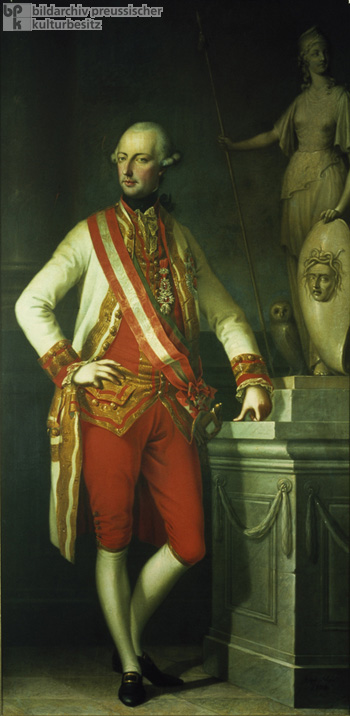













INTRODUCTION | DOCUMENTS | IMAGES | MAPS | EDITOR
|
The son of Maria Theresa (r. 1740-80), Holy Roman Emperor Joseph II (r. 1765-90) was one of the leading representatives of “enlightened absolutism.” He was responsible for many significant reforms, including the abolition of juridical serfdom (1781) and the issuance of an edict of toleration for the Jews (1782). His reform efforts – partly inspired by power-political aims, partly by enlightenment principles – focused on a variety of areas such as administration, social policy, agriculture, and the judiciary, where torture was abolished as a judicial tool in 1777. In contrast to his mother, Joseph pursued the reform course impetuously, antagonizing established circles like the nobility and clergy with his centralist and anti-corporativist policies. Resistance from these circles forced him to abandon some reforms toward the end of his reign; other reforms were revoked after his death. In foreign policy, he initially strove for reconciliation with Frederick II (“the Great”) of Prussia (r. 1740-86), with whom he cooperated in the First Partition of Poland in 1772. His mother, it should be noted, viewed this cooperation with ambivalence. But the Prussian king eventually thwarted Joseph’s attempt to incorporate Bavaria into Austria, and the two countries battled each other once again in the ensuing War of the Bavarian Succession (1778-79). The price of Joseph’s alliance with Russia was Austrian involvement in a war against the Ottoman Empire; this war came late in his reign and put Austria in an extremely precarious position. The image shows Joseph next to a sculpture of Minerva (Greek: Athena), the goddess of wisdom. Oil painting by Joseph Hickel (1736-1807), second half of the eighteenth century.
© Bildarchiv Preußischer Kulturbestiz / Lutz Braun |
 print version
print version return to image list
return to image list previous image
previous image
